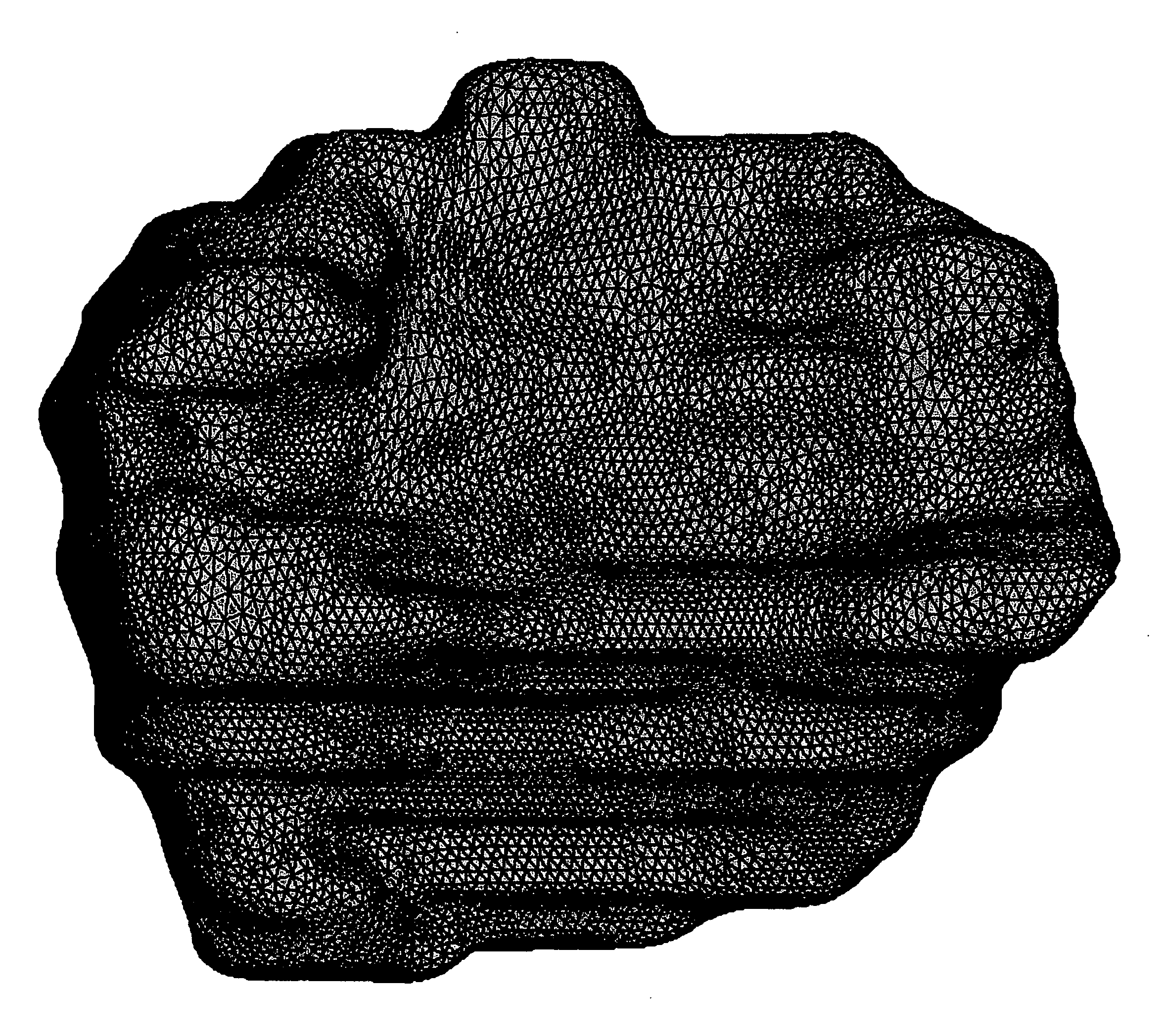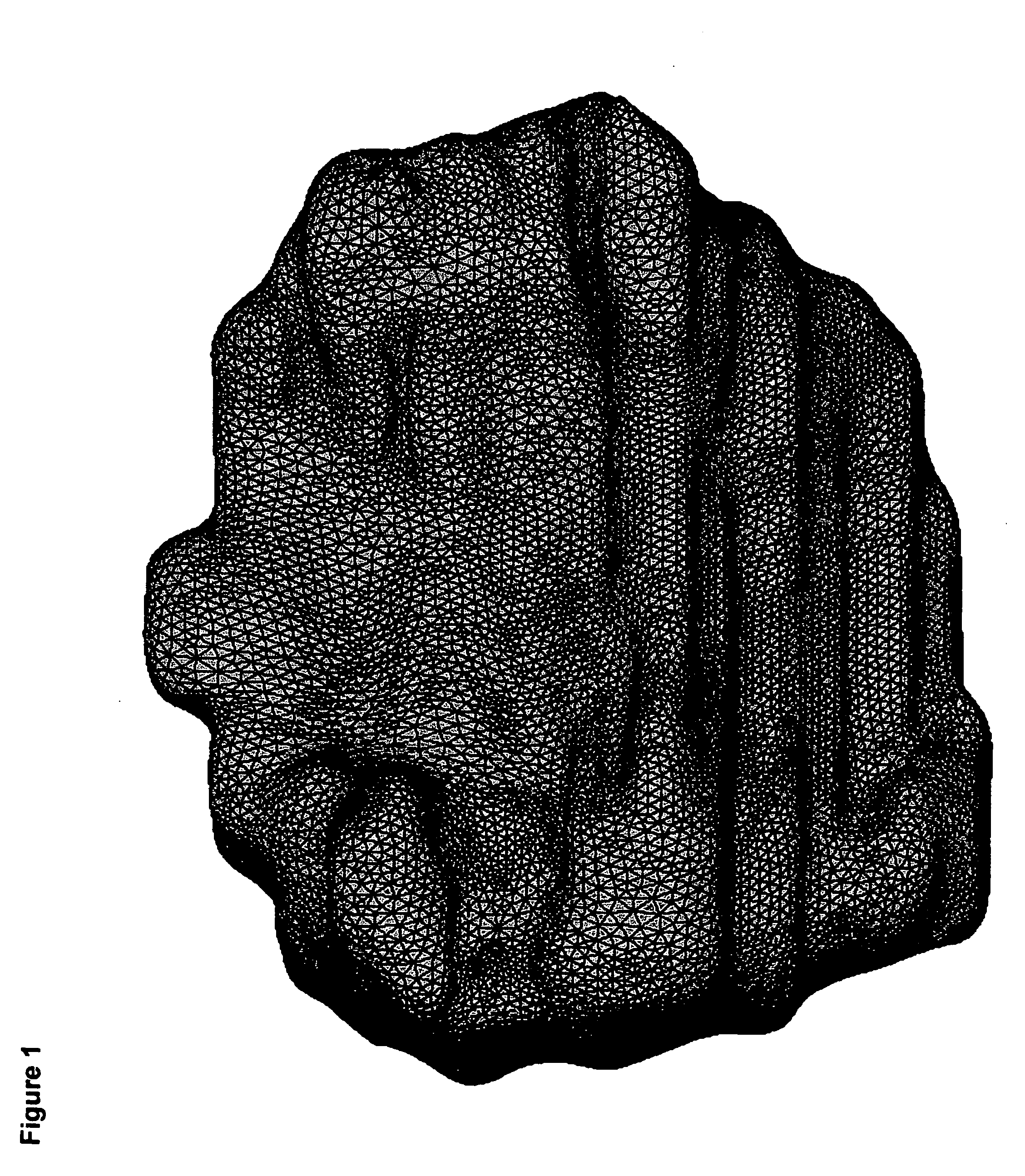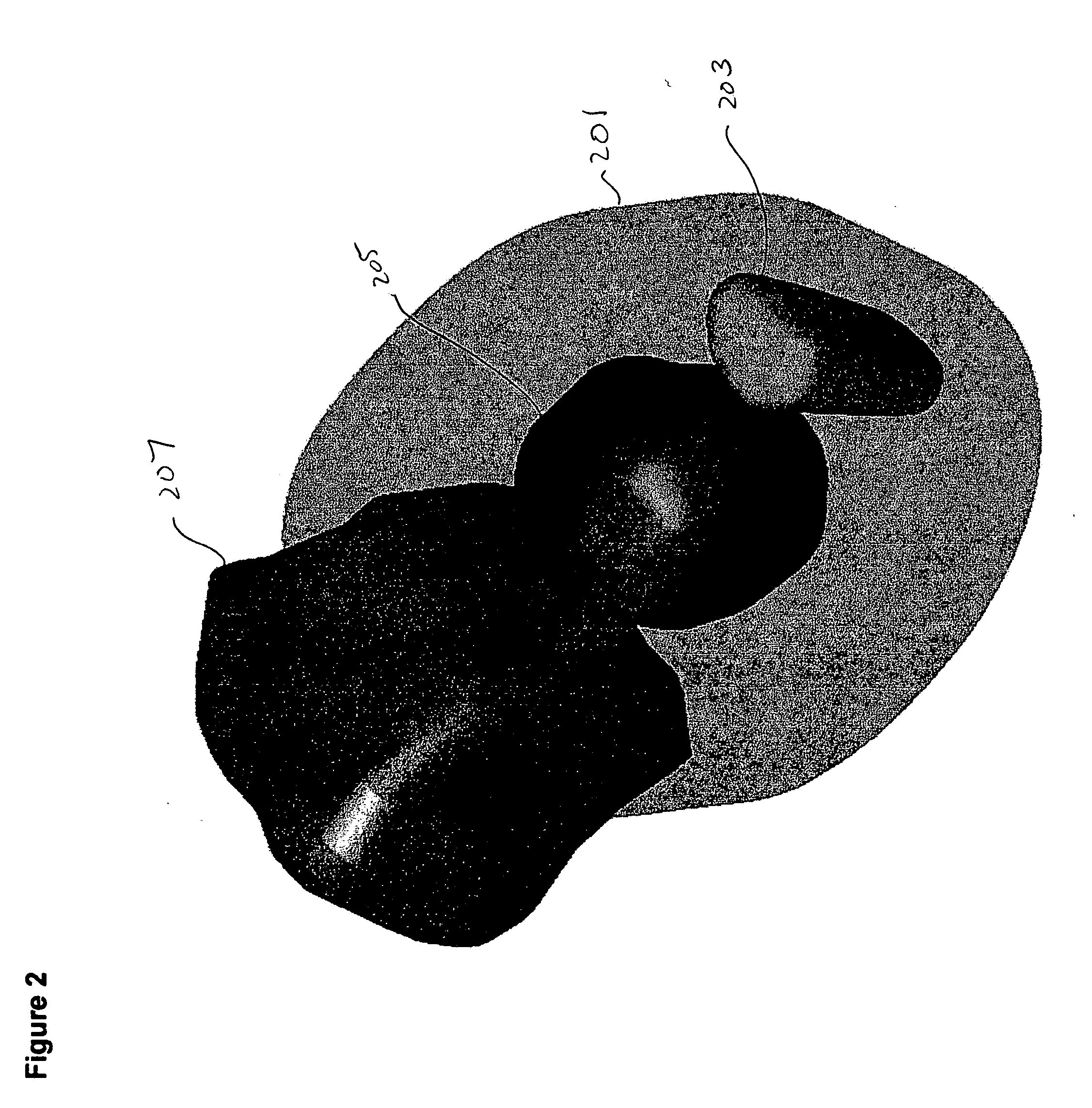Deterministic computation of radiation doses delivered to tissues and organs of a living organism
a living organism and radiation dose technology, applied in the field of computer simulation of radiative transport, can solve the problems of high complexity of physical models that describe radiation transport through human tissues, limited accuracy and scope of their use, and treatment plans with a lower tumor control probability, so as to improve the accuracy of solution and computational efficiency.
- Summary
- Abstract
- Description
- Claims
- Application Information
AI Technical Summary
Benefits of technology
Problems solved by technology
Method used
Image
Examples
Embodiment Construction
[0046] Although Monte-Carlo-based radiation does calculation is considered by many to be the only accurate method for computing radiation doses in human tissues, the Monte Carlo technique may be too computationally expensive for use in many applications, and may not provide desirable accuracy when the computations employ approximation necessary to carry out radiation-dose calculations within the time constraints imposed by real-word applications. An alternative to Monte-Carlo-based radiation does calculation is the deterministic solution of the Boltzmann equation that models radiation transport through materials. A common approach for calculating radiation doses using the Boltzmann equation is known as “discrete-ordinates.” This approach discretizes the radiation-transport problem in space (finite-difference or finite-element), angle (discrete-ordinates), and energy (multi-group cross sections), and then iteratively solves the differential form of the transport equation in a discret...
PUM
 Login to View More
Login to View More Abstract
Description
Claims
Application Information
 Login to View More
Login to View More - R&D
- Intellectual Property
- Life Sciences
- Materials
- Tech Scout
- Unparalleled Data Quality
- Higher Quality Content
- 60% Fewer Hallucinations
Browse by: Latest US Patents, China's latest patents, Technical Efficacy Thesaurus, Application Domain, Technology Topic, Popular Technical Reports.
© 2025 PatSnap. All rights reserved.Legal|Privacy policy|Modern Slavery Act Transparency Statement|Sitemap|About US| Contact US: help@patsnap.com



